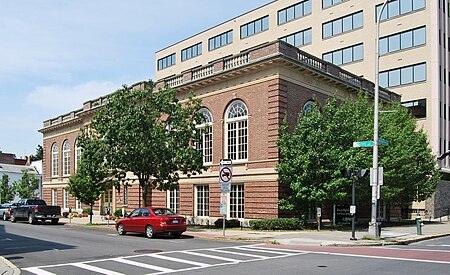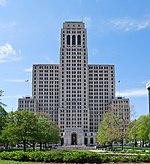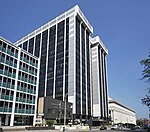Harmanus Bleecker Library

The former Harmanus Bleecker Library is located at the intersection of Washington Avenue (New York State Route 5) and Dove Street in Albany, New York, United States. It is a brick and stone Classical Revival building constructed in the 1920s. In 1996 it was listed on the National Register of Historic Places.Designed by notable local architects, the Fuller & Robinson Company, it was the first building in the city intended to be used exclusively as a library, and is considered one of city's best buildings in its architectural style. Along with the nearby University Club, built shortly afterwards, it was Fuller's last major work in the city where he had practiced most. It took its name from Harmanus Bleecker, a prominent Albany politician and benefactor whose estate provided the funds for its construction. It has since been adapted to serve as office space.
Excerpt from the Wikipedia article Harmanus Bleecker Library (License: CC BY-SA 3.0, Authors, Images).Harmanus Bleecker Library
Dove Street, City of Albany
Geographical coordinates (GPS) Address Nearby Places Show on map
Geographical coordinates (GPS)
| Latitude | Longitude |
|---|---|
| N 42.655277777778 ° | E -73.761388888889 ° |
Address
Dove Street 19
12210 City of Albany
New York, United States
Open on Google Maps











